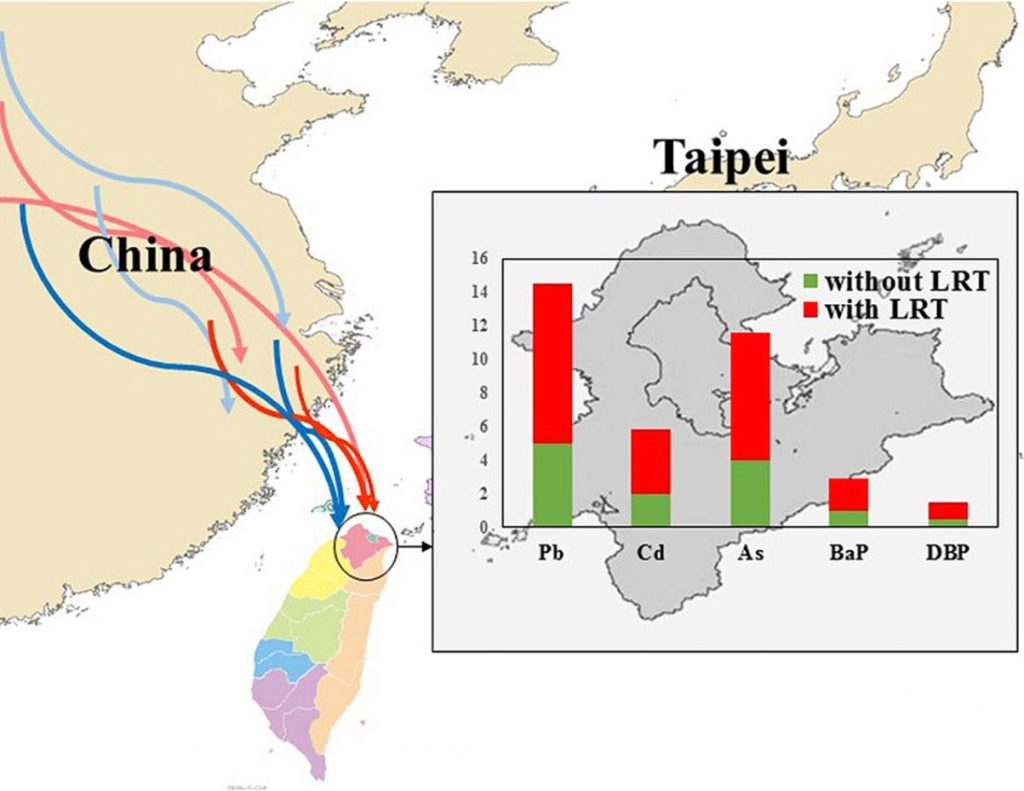 Due to its unique location, the air quality in the Taipei Basin is often significantly influenced by long-range transported (LRT)-related dusts and anthropogenic aerosols originated from the Asian continent. Among the ambient aerosols, the associated metals and polycyclic aromatic hydrocarbons (PAHs) are the most important toxic components in urban areas. Dr. Yu-Cheng Chen and team from the National Institute of Environmental Health Sciences evaluated metal and PAH concentrations in fine and coarse particles in Taipei for summer and winter and used multiple methods of the trajectory analysis and receptor models to determine the influence of PMs and associated species from local sources and LRT. While the excess cancer risks (ECR) of metals and PAHs attributable to sources were also estimated.
Due to its unique location, the air quality in the Taipei Basin is often significantly influenced by long-range transported (LRT)-related dusts and anthropogenic aerosols originated from the Asian continent. Among the ambient aerosols, the associated metals and polycyclic aromatic hydrocarbons (PAHs) are the most important toxic components in urban areas. Dr. Yu-Cheng Chen and team from the National Institute of Environmental Health Sciences evaluated metal and PAH concentrations in fine and coarse particles in Taipei for summer and winter and used multiple methods of the trajectory analysis and receptor models to determine the influence of PMs and associated species from local sources and LRT. While the excess cancer risks (ECR) of metals and PAHs attributable to sources were also estimated.
The team found that a 25% of PM2.5 mass concentrations in Taipei for 2014 was associated with LRT. The level of PM2.5-bound toxic metals (Pb, Cd, and As) and PAHs (BaP and DBP) could increase by 90% under the influence of LRT. The ECR resulting from PM2.5-bound metal and PAH exposures was 6.40 × 10−5 in relation to coal combustions (20.7%), traffic-related emissions (59.7%) and re-suspended aerosols (19.6%). Among these contributors, LRT-related metals and PAHs in PM2.5 accounted for 51% of the total ECR. These findings have been published in Environmental Pollution (2019 Jul;250:934-943).
Citation: Hsu, CY; Chiang, HC; Chen, MJ; Yang, TT; Wu, YS; Chen, YC. Impacts of hazardous metals and PAHs in fine and coarse particles with long-range transports in Taipei City. Environmental Pollution. 2019 Jul;250:934-943.
